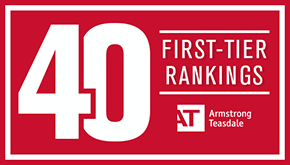DOL Fiduciary Rule Expected This Spring
Highlights
- The Department of Labor (DOL) proposes changes to the long-standing fiduciary determination for the third time in an attempt to broaden who classifies as a fiduciary under the Employee Retirement Income Security Act of 1974 (ERISA), as amended.
- Proposal contemplates amending several prohibited transaction exemptions with respect to investment advice wanting to make Prohibited Transaction Exemption (PTE) 2020-2 the standard for advice provided to plans and participants.
- In an unusual move, the DOL held a hearing regarding their proposed rules before the comment period had ended and received more than 19,000 comments during the comment period, which ended Jan. 2, 2024.
- A version of the final rule was sent to the Office of Management and Budget for review and approval on March 8, 2024, and it is expected to be released sometime this spring.
- The proposed rule redefines fiduciary advice to be advice that services the needs of the retirement investor and, if adopted, could force many investment professionals to rely on PTE 2020-02 as opposed to other historical exemptions such as PTE 84-24. Armstrong Teasdale is closely monitoring the impact of the final proposal on client operations.
Background
On Oct. 31, 2023, the DOL published proposed changes to the longstanding meaning of what constitutes “investment advice” under the definition of a “fiduciary” under ERISA. The “investment advice” definition has remained unchanged since 1975. Although the DOL has tried over the better part of the last decade to amend the investment advice definition, its attempts have been mostly unsuccessful. In 2018, the U.S. Court of Appeals for the Fifth Circuit vacated the previous attempt to modify the investment advice definition, holding that the DOL had exceeded its authority in its attempt to modify the rule. After the defeat, the previous rule from 1975 again became the standard for defining investment advice.
The Biden administration believes that the current fiduciary definition of “investment advice” has too many loopholes that end up imposing unnecessary fees and costs on individuals who save for retirement. To combat these loopholes, the DOL has made proposals aimed at broadening the reach of ERISA fiduciary obligations to hold those who advise individuals on their retirement savings investments to a higher standard and ensure that the individual’s retirement account is prioritized over the investment professional’s financial interests.
In addition to amending the fiduciary definition, the DOL has proposed amending certain existing prohibited transaction exemptions on which investment professionals currently rely. These amendments would eliminate an investment professional’s ability to receive relief when providing advice under such applicable exemption and force fiduciaries to rely on a modified Prohibited Transaction Exemption 2020-02 and a modified Prohibited Transaction 84-24 to make investment advice relief conditions more standardized. Because the DOL is looking to broaden who is an ERISA fiduciary, when the regulation is finalized “investment professionals” could include certain associated persons of broker-dealers and investment advisers and certain insurance company producers, though additional factors, such as business models of these firms, could also affect fiduciary status determination. Furthermore, current trade advocacy around this topic could result in further changes to the final rule in terms of who is in scope and who is not.
The Existing Rule
Under the existing fiduciary rule (1975 Rule), to be deemed to be providing “investment advice” with respect to a plan, a person must (i) render advice as to the value of securities or other property, or make recommendations as to the advisability of investing in, purchasing or selling securities or other property; (ii) provide advice on a regular basis, (iii) pursuant to an express or implied mutual agreement, arrangement or understanding that such service will (iv) serve as the primary basis for the plan’s investment decision; and (v) take into account the particular needs of the plan. Under the 1975 Rule, each of the above stated five conditions must be met for there to be investment advice rising to the level of an ERISA fiduciary. When applying this rule to financial professionals in the context of a defined contribution plan, especially in the case of a rollover transaction, the advice is usually missing at least one or two of the elements from the 1975 Rule, such as “on a regular basis” or “a mutual agreement.”
Proposed Fiduciary Rule
The DOL believes that investment-related decisions in the context of a defined contribution plan could be some of the most important decisions being made for the plan, and as such, the advice should be made under the protections provided by the ERISA fiduciary classification. The DOL has proposed that a person would be an investment advice fiduciary if (a) they provide investment advice or make an investment recommendation to a “retirement investor” (i.e., a plan, plan fiduciary, plan participant or beneficiary, IRA, IRA owner or beneficiary, or IRA fiduciary); (b) the advice or recommendation is provided “for a fee or other compensation, direct or indirect,” as defined in the proposed rule; and (c) the person provides the advice or makes the recommendation in one of the following contexts: (i) the person either directly or indirectly (e.g., through or together with any affiliate) has discretionary authority or control, whether or not pursuant to an agreement, arrangement or understanding, with respect to purchasing or selling securities or other investment property for the retirement investor; (ii) the person either directly or indirectly (e.g., through or together with any affiliate) makes investment recommendations to investors on a regular basis as part of their business and the recommendation is provided under circumstances indicating that the recommendation is based on the particular needs or individual circumstances of the retirement investor and may be relied upon by the retirement investor as a basis for investment decisions that are in the retirement investor’s best interest; or (iii) the person making the recommendation represents or acknowledges that they are acting as a fiduciary when making investment recommendations.
Significant Changes from the 1975 Rule
- The advice would no longer serve the needs of the plan, but rather the advice would service the needs of the retirement investor.
- The advice would no longer need to be “provided to the plan on a regular basis” but rather would apply if the person “provides investment advice or recommendations to investors on a regular basis” (i.e., is the person in the business of making recommendations or providing financial advice).
- It would replace the “mutual agreement, arrangement or understanding” standard from the 1975 Rule and focus on the facts and circumstances surrounding the recommendation, taking account of how the investment professional portrayed themselves and described the services offered to the retirement investor.
- It would remove the “primary basis” standard from the 1975 Rule, in favor of an examination of the circumstances surrounding the recommendation to determine if the advice could be relied on by the retirement investor “as a basis for investment decisions” that are in the retirement investor’s best interests.
These changes would significantly increase the number of persons who could be considered investment advice fiduciaries, though, as noted above, this area has been the subject of significant industry advocacy. Nevertheless, there is a concern that such changes could hinder the current market for advice to retirement investors and cause investment professionals that provide advice to move away from interactions with retirement investors for fear of becoming an ERISA fiduciary.
Proposed Amendments to Prohibited Transaction Exemptions
In its proposal the DOL has aimed to require any conflict of interest relating to investment advice to rely on either Prohibited Transaction 2020-02 “Improving Investment Advice for Workers and Retirees” or Prohibited Transaction 84-24 “Transactions Involving Insurance Agents and Brokers, Pensions Consultants, Insurance and Investment Companies, and Investment Company Underwriters” in the case of independent insurance agents. The DOL would no longer provide any investment advice relief under Prohibited Transaction Exemptions 75-1 “Securities Transactions Involving Broker-Dealers, Reporting Dealers and Banks,” 77-4 “Purchase of Shares of Open-End Investment Companies,” 80-83 “Use of Proceeds from Sale of Securities to Reduce or Retire Indebtedness,” 83-1 “Mortgage Pool Investment Trusts” and 86-128 “Executing Securities Transactions and Recapture of Commissions.” As a result, all investment advice fiduciaries would be held to the same standard in providing investment advice to ERISA plans.
PTE 2020-02 provides that investment advice fiduciaries can receive compensation for advice that would otherwise be prohibited, provided that the conditions of the exemption are met. The exemption is designed to mitigate conflicts of interest to ensure that retirement investors receive prudent advice based on the investor’s best interests. The DOL has stated that it believes the proposed changes to PTE 2020-02 are intended to be clarifying in nature, such as additional disclosure requirements, and would not change the core conditions currently maintained in the exemption.
PTE 84-24 provides relief to fiduciaries when receiving compensation related to certain insurance and mutual fund transactions with a plan. The amendments to this exemption are intended to be very similar to the conditions of PTE 2020-02 with respect to investment advice. The DOL is proposing a new section of the exemption that would apply to independent insurance agents selling non-securities annuities or other insurance products not regulated by the Securities and Exchange Commission (SEC). The DOL’s conditions to receiving relief rely heavily on the disclosure of commissions and fees when recommending annuities or other insurance products not regulated by the SEC.
Conclusion
The DOL received over 19,000 comments on the proposed rules before the Jan. 2, 2024, deadline and unusually held hearings on the proposed rules before the comment period had ended. Many expect that, if the proposed rules are finalized, there will be challenges to the rules under the Administrative Procedures Act due to this unusual procedure. In addition, it has been speculated that the DOL is rushing the proposed rules through in the event a new administration takes over in 2025, which could make the final version of the rule more difficult to amend or eliminate by a new administration.
Such speculation could indeed be accurate considering that the final regulation was sent to the Office of Management and Budget on March 8, 2024, approximately two months after the closing of the comment period. Last, the DOL is facing harsh critics in Congress and faced difficult questions in a recent hearing before Congress where the DOL was asked if the proposed rules were really necessary when the SEC’s Regulation Best Interest, the current DOL’s five-part test, and the National Association of Insurance Commissioners’ Best Interest Standard for annuity sales are already in effect as safeguards for retirement investors. Certain members of Congress have expressed intentions to act, perhaps by defunding any actions taken with respect to the proposed rules, to halt any further progression of the DOL’s proposed rules. Despite this resistance, unless something derails the current trajectory of the regulation, it is anticipated the final version of the regulation could be released sometime this spring.
If you have any questions regarding the proposed rules, please contact your regular AT lawyer or one of the listed authors.









































